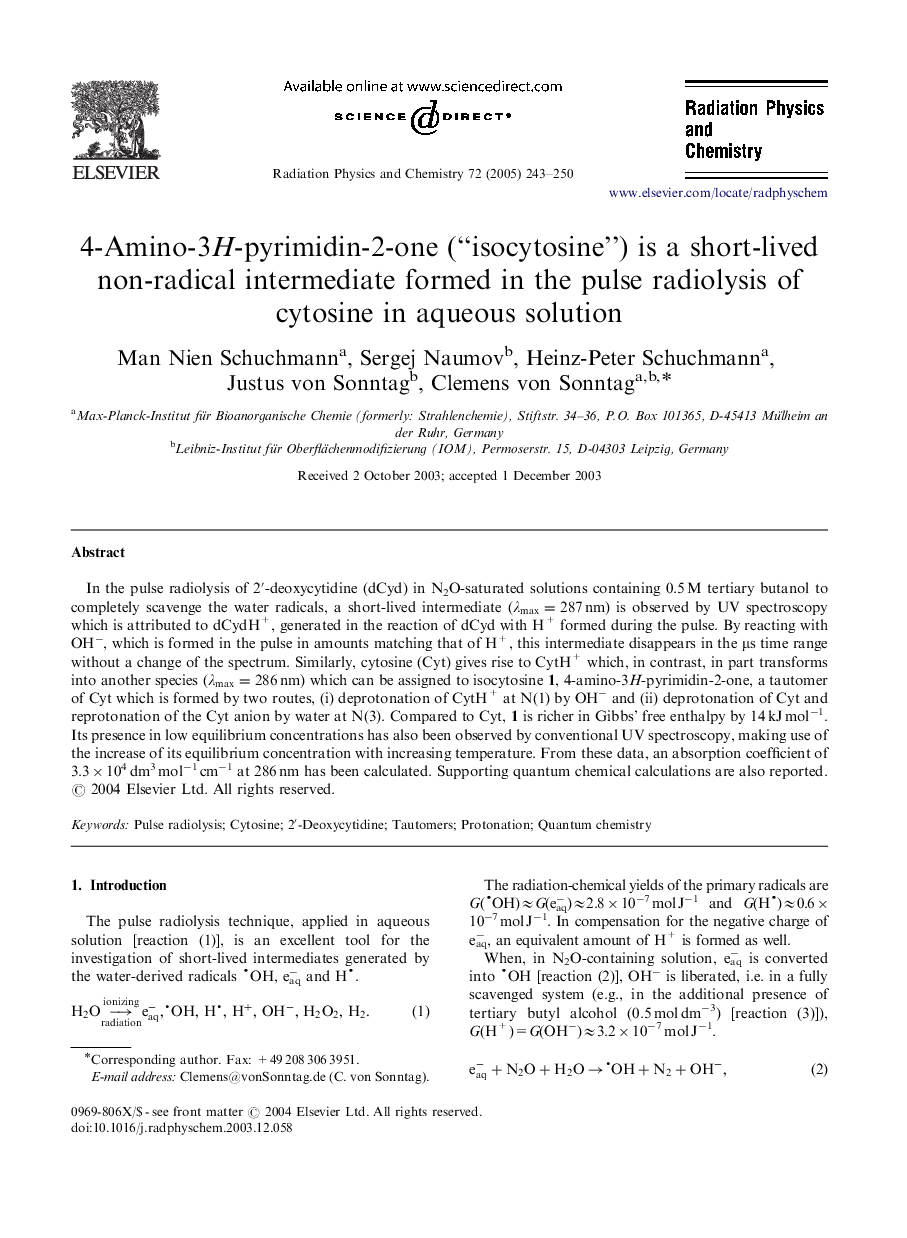| Article ID | Journal | Published Year | Pages | File Type |
|---|---|---|---|---|
| 9876368 | Radiation Physics and Chemistry | 2005 | 8 Pages |
Abstract
In the pulse radiolysis of 2â²-deoxycytidine (dCyd) in N2O-saturated solutions containing 0.5 M tertiary butanol to completely scavenge the water radicals, a short-lived intermediate (λmax=287nm) is observed by UV spectroscopy which is attributed to dCydH+, generated in the reaction of dCyd with H+ formed during the pulse. By reacting with OHâ, which is formed in the pulse in amounts matching that of H+, this intermediate disappears in the μs time range without a change of the spectrum. Similarly, cytosine (Cyt) gives rise to CytH+ which, in contrast, in part transforms into another species (λmax=286nm) which can be assigned to isocytosine 1, 4-amino-3H-pyrimidin-2-one, a tautomer of Cyt which is formed by two routes, (i) deprotonation of CytH+ at N(1) by OHâ and (ii) deprotonation of Cyt and reprotonation of the Cyt anion by water at N(3). Compared to Cyt, 1 is richer in Gibbs' free enthalpy by 14 kJ molâ1. Its presence in low equilibrium concentrations has also been observed by conventional UV spectroscopy, making use of the increase of its equilibrium concentration with increasing temperature. From these data, an absorption coefficient of 3.3Ã104 dm3 molâ1 cmâ1 at 286 nm has been calculated. Supporting quantum chemical calculations are also reported.
Related Topics
Physical Sciences and Engineering
Physics and Astronomy
Radiation
Authors
Man Nien Schuchmann, Sergej Naumov, Heinz-Peter Schuchmann, Justus von Sonntag, Clemens von Sonntag,
